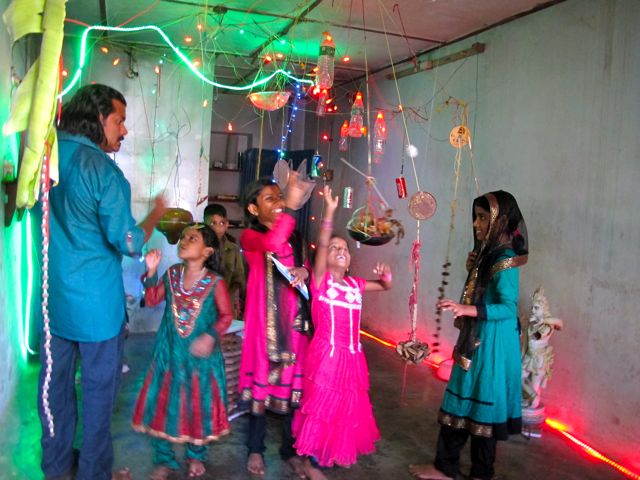Kochi-Muziris Biennale 2012
By Siri Bulusu

Kochi-Muziris Biennale 2012
By Siri Bulusu
While south India lacks a reputation for its art scene (that reputation is held strong by West Bengal), many of India’s notable artists originated there such as singers SP Balasubramaniam and S Janaki. British musical artist M.I.A is also of south Indian descent. But even so, the regions inherent talent seems to move out to places like Bombay or Calcutta, places where there is a venerable art scene.
“Visual art has always been sidelined [in Kerala],” says Bose Krinshamachari, President of the Kochi Niennale Foundation and artistic director of the Kochi-Muziris Biennale. “There is no museum culture, no cultural policy to support artists, no professional spaces or collectors. The most interesting artists are Keralites who have moved out of Kerala to the rest of the world.”
“There are 4 million Keralites living outside of Kerala,” he said, “We needed to do something that would put focus on the state culturally and benefit economically.” Having traveled extensively abroad, Bose felt that a Biennial (an art exhibition held every other year) would realize their vision for Kerala.
Tucked away in various heritage buildings around Kochi, the art of 80 artists from 24 countries is currently on display. I visited the main exhibition site in the Aspinwal House, located right on the edge of India’s west coast. Dispite having lived in India for nearly two years, I was expecting the exhibition to feel cold and sterile, much like the museums and galleries I would visit in Chicago or even around India.
What I found was far to the contrary. Several artists were standing alongside their pieces, engaged in conversation with both locals and foreign travelers. Children ran all around the worn-down warehouse which housed most of the paintings and small groups gathered together around particularly engaging video installments. Perhaps most delighting was an old tree which had rope swings tied to it for the public to enjoy.
Meera Sawkar, an American native noted the unique atmosphere for the exhibition. “Usually when you see these sort of audio and visual installations or paintings its in a really sterile, pristine environment. The industrial or barn like structures were a really unique backdrop for this modern art which used all these different technologies.”
“It’s a very interesting way to view art when you’re both inside and outside and wandering through a historical heritage center.”
“I came to Kochi to enjoy my New Years. I just found out about the festival walking by,” says Kerala native Anish Rahman . “It is my first experience seeing anything this big and I like seeing so many foreigners enjoying also. It’s really fantabulous,” he finished with a smile.
While the content seemed similar to that which we see in western art exhibitions, they all included something which kept my focus in India. One video installation called “Pushing” by a Chinese artist that forced my own memories of crowded train platforms.
Another piece by Italian artist Guiseppe Stampone was a made-over auto-rickshaw (my regular mode of transportation around Bangalore) with speakers attached to the top playing Marylin Monroe’s “Bye Bye Baby” on a loop.
My favorite was an audio installment by an Australian artist. A powdered spice mixture was placed on the ground next vessels connect to a speakers. Next to that, a sign that said “place the spices in the vessels.” People of all ages would crouch on the floor, scooping spices into their hands and listening eagerly at the sounds the machine created.
“I loved that you can touch and feel and hear the art.” added Sawkar. “it was really refreshing that it incorporated elements that were physical and that people were allowed to interact with the art. It’s Indian.”
Bose Krinshamachari is pleased with the responses to the Biennale. “The local people are the ones who should enjoy this first and foremost. Whether they realize this is the most significant artistic movement in South India’s history is secondary.”